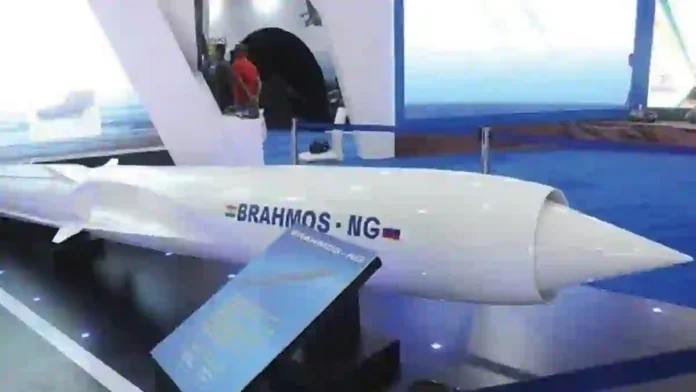The BrahMos-NG (Next Generation) supersonic cruise missile, a joint venture between India’s Defence Research and Development Organisation (DRDO) and Russia’s NPO Mashinostroyeniya, is slated for autonomous testing in 2026, marking a significant step forward in India’s missile technology.
The missile is currently in its advanced design stage, expected to complete by 2026, after which autonomous flight tests will begin. BrahMos Aerospace’s Russian managing director, Alexander Maksichev, confirmed the current work on the design, with testing planned to follow soon after.
Read- Made-In-India From WhatsApp To SAMBHAV: How Indian Army Secured Its Secrets During Operation Sindoor
The BrahMos-NG is a compact, lightweight evolution of the original BrahMos missile, weighing about 1.29 tonnes as opposed to the 2.9 tons of the original, making it approximately half the weight. It maintains a flight range of over 300 kilometres and achieves speeds around Mach 3.5, similar to its predecessor.
This new version boasts several improvements, including enhanced manoeuvrability, a reduced radar signature for better stealth, and ease of deployment across a wider range of platforms.
Integration flexibility is a key advancement; the BrahMos-NG is designed to be compatible with multiple fighter jets, significantly expanding India’s aerial strike capabilities. It can be carried by various platforms such as the TEJAS, Rafale, MiG-29, and Sukhoi Su-30MKI.
Due to its reduced size and weight, aircraft like the TEJAS MK-1A may carry two of these missiles, while a Su-30MKI could carry up to three or four, compared to just one BrahMos on current platforms like the Sukhoi.
From a technical and operational perspective, the BrahMos-NG is engineered with cutting-edge avionics, including AESA radar technology replacing the mechanically scanned radar of the original, and features optimised for electronic countermeasure resilience.
Read- India-US Negotiations Back On Track, Trump Certain of ‘No Difficulty’ In Trade Talks
Read- ‘In India, Land Will Remain Currency of Victory’: Army Chief General Upendra Dwivedi
The missile is shorter (about 6 meters long compared to 9 meters), more compact with a diameter of 50 cm, and lighter, allowing for broader deployment options including air-launched, naval, and submarine platforms.
Production of the BrahMos-NG is expected to begin within three to five years after the design and testing stages, with a dedicated manufacturing facility being prepared to support this scale-up. This aligns with reported timelines for initial flight tests in 2026 and production starting between 2027 and 2028.
This missile project advances India’s strategic strike capabilities with a versatile, stealthier, and more lethal missile capable of precision strikes from diverse platforms. It notably enhances India’s defence export potential, with growing interest from countries in Africa and West Asia.
The BrahMos-NG embodies a leap in India’s missile technology, aiming for wider operational flexibility and greater lethality across multiple domains.
The BrahMos-NG represents a critical upgrade with its lightweight design, improved performance parameters, stealth features, and broad platform compatibility, poised to enter test flights in 2026 and production shortly thereafter, reinforcing India’s position in supersonic cruise missile technology and strategic defence capabilities.
Based On The Week Report
Agencies




